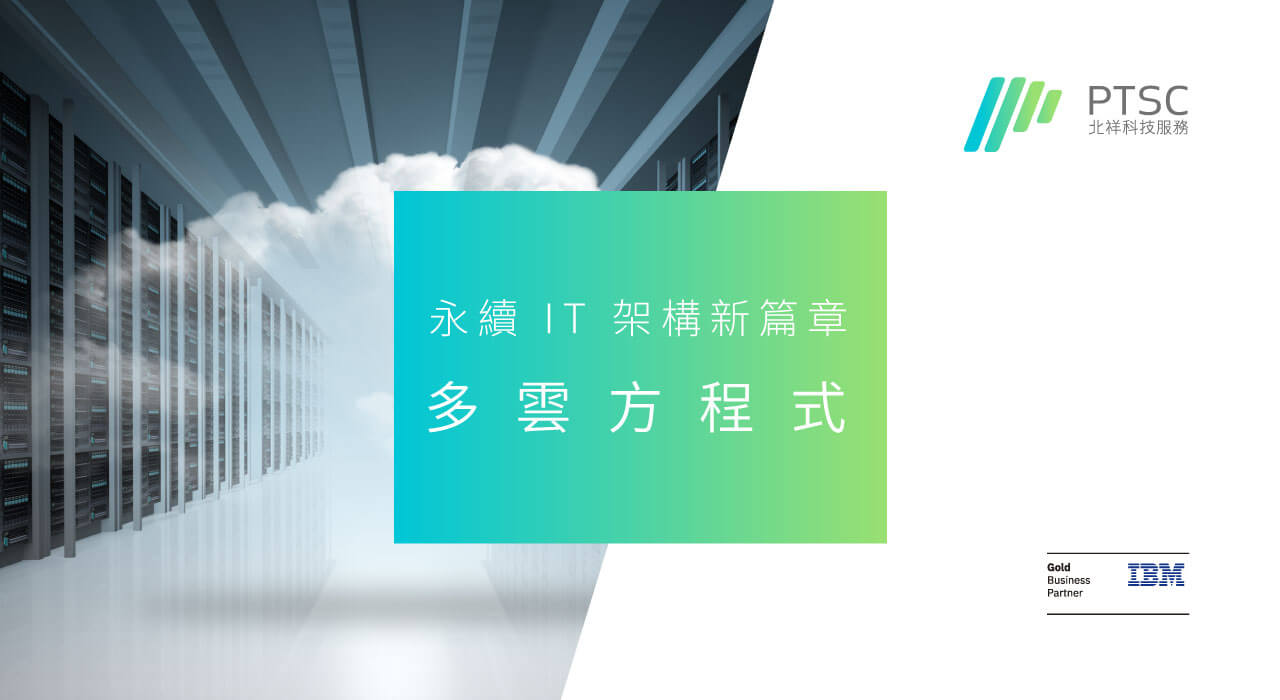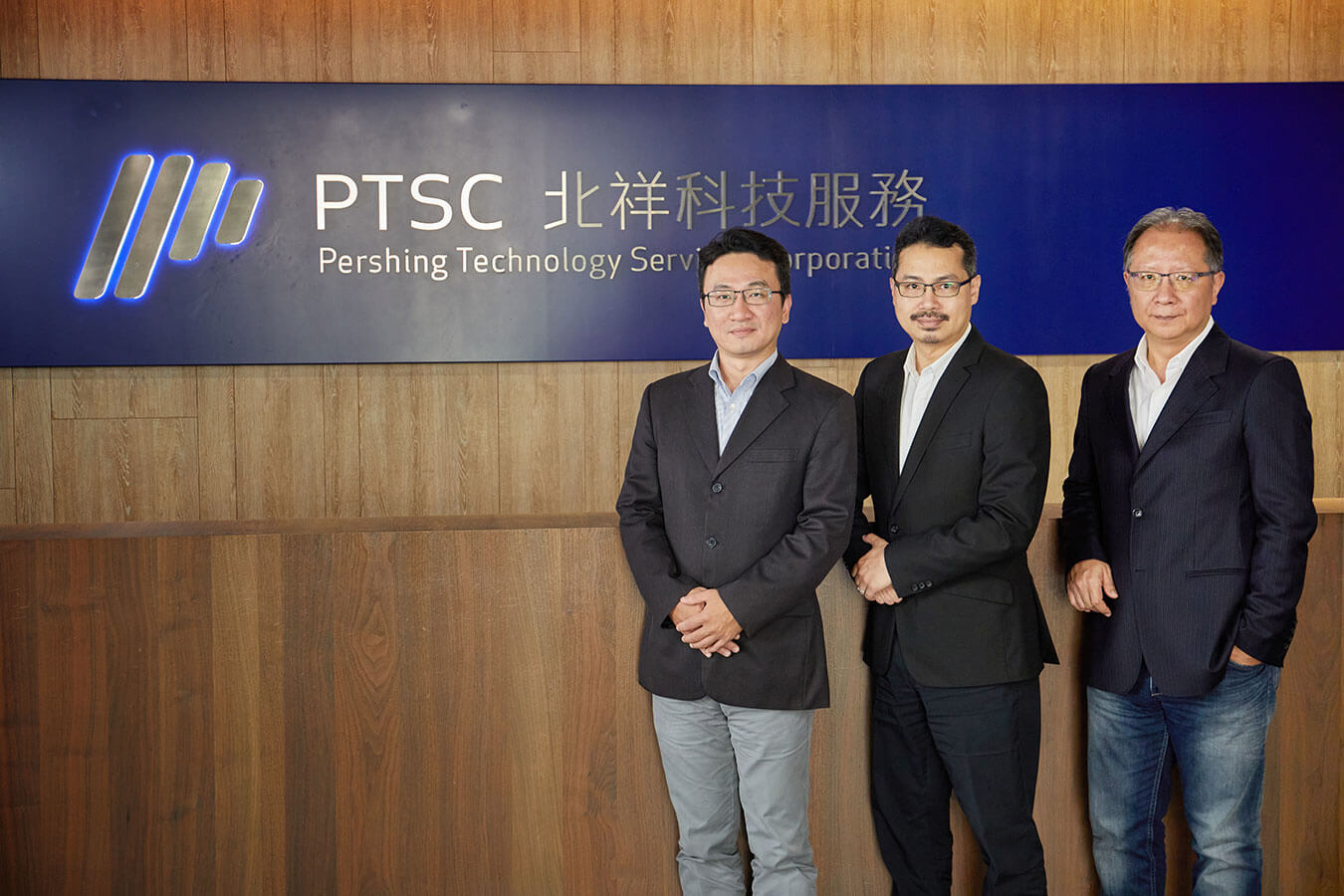IBM and Pershing jointly promote IBM Cloud Paks and LinuxONE to help enterprises quickly build a stable and agile modern IT infrastructure
2020/07/24

More than 30 VIPs participated, gathering financial institutions and enterprises to participate in the grand event
Most companies agree with the benefits of “hybrid multi-cloud,” but the proportion of services and resources that have been moved to the cloud is quite small. The main sticking point is that many companies are concerned about the security, performance, and investment costs of moving to hybrid and multi-cloud.
In order to help enterprises to put aside their doubts and actualize an innovative business model that is fast, agile, and open source as soon as possible, IBM and Pershing Technology Services Co., Ltd. held an online forum on the “New Chapter of Sustainable IT Infrastructure-Multi-cloud Equation” a few days ago, describing how to use IBM Cloud Paks multi-cloud native functions, combined with the new generation of LinuxONE open platform. The hope is to help enterprises build a perfectly compatible hybrid cloud which enables them to easily have an agile and open cloud, the highest level of data confidentiality, all while reducing total cost of ownership (TCO) and increasing return on investment (ROI). The end goal is to create a long-lasting permanent sustainable IT infrastructure.
Ensuring stability and agility, promoting digital transformation of finance
Pershing product manager, Wang Qingxiang, took the lead in explaining the essence of “realizing financial digital transformation in the integration of stability and agility”. He pointed out that in the face of the deployment of hybrid cloud architecture under the multi-cloud strategy, IT departments of many financial institutions often encounter multiple difficulties, including how to ensure data security, privacy, and compliance. How to ensure a seamless connection between cloud platforms? How to pan for gold from data? How to construct an IT architecture that conforms to green energy trends with limited computer room space and power supply? Furthermore, with the launch of 5G, AI, and smart finance, how to create new business value with financial technology?

(Left) Wang Qingxiang, Project Manager of PDC; (Middle) Huang Zhonghong, Senior Project Manager of PDC; (Right) Liao Xueguo, Senior Consultant, IBM Asia Pacific Competitive Office
“In this forum, IBM and Pershing will work together to find the best solution,” said Wang Qingxiang. In the post-epidemic era, the financial services industry must continue to deploy ahead of time and actively build a new type of infrastructure to connect services and data, supporting the development of digital finance. In order to promote the digital transformation of finance, financial institutions need to have two core capabilities: 1) the ability to develop and cooperate with scenarios, and 2) the ability to integrate and analyze data. For this reason, the solutions brought by IBM start from the modernization of infrastructure. Gradually help users achieve the goal of “business core capabilities in the cloud, stability and agility of transactions”, so that enterprises can replace traditional platforms through a container-based hybrid multi-cloud architecture, and develop finance faster and easier for more innovative services.
IBM proposes a modern intelligent digital service platform, based on OpenShift management technology. By combining with Cloud Paks enterprise-level PaaS platform, and through Cloud Pak for Application/ Integration/ Automation/ Multicloud Management and other topics, it helps financial institutions build the capacity for scenario development and cooperation. In addition, through the Cloud Pak for Data solution, it provides users with an end-to-end open and extensible data management platform, which not only manages the data life cycle, but also uses a new generation of machine learning and deep learning technology to inject AI into business operations.
Next, Huang Zhonghong, senior project manager of PDC, introduced how to build a stable and agile modern architecture with IBM LinuxONE. He emphasized that LinuxONE contains a large number of black technologies, which can help users build a stable and agile hybrid multi-cloud architecture based on the Linux ecosystem and technology stack.
Zhong Hong said that in 2018, the sales of LinuxONE in the Greater China region increased by 3.5 times, and in 2019, the growth rate reached 4 times. It is based on four key reasons that many users favor LinuxONE. The first is “free and open source”, which uses the free and open source ecosystem to create a new combination of commercial software and open source software to promote IT architecture transformation and achieve cost optimization. The second is “stable and sensitive integration”, which takes care of the stable operation of existing business systems and supports the agility, flexibility and innovation required for the development of various emerging businesses. LinuxONE has both Scale Up and Scale Out capabilities, and a single machine supports 85 LPAR, 8,000 virtual machines and 2.4 million containers help users achieve a variety of hybrid load balancing and achieve high-speed connections between different applications.
The third is “green computing.” With LinuxONE, it can form a greatly improved sustainable green calculation formula with one-stop-per-hundred capabilities, avoiding computer room space, equipment power consumption, software licensing costs, and maintenance complexity caused by the rapid increase in the amount of equipment. The fourth is “safety”. LinuxONE provides ubiquitous and universal encryption to help enterprises realize data and privacy protection under a hybrid multi-cloud architecture. With leading technologies such as partition load isolation and secure service containers, it eliminates internal and external threats and creates the ultimate security experience.
Use Cloud Paks and LinuxONE to reduce TCO and avoid risks
Liao Xueguo, senior consultant of the IBM Asia Pacific Competitive Office, analyzed the value of IBM Cloud Paks and LinuxONE to the enterprise from a cost-benefit perspective.
He pointed out that a single CPU of LinuxONE can be worth about 23 x86 CPUs, which helps to achieve savings in the number of purchases. It also saves more than 40% of the computer room power and greatly reduces TCO; more importantly, LinuxONE has some black technologies, such as the encryption technology embedded in the device which allows users to fully protect their data without additional expenditure. Furthermore, it is based on a fully open architecture that can meet the needs of Cloud Native modern applications and has an enterprise-level architecture design; therefore, it can rely on a single platform which meets the security, usability, stability and innovation that enterprises expect at the same time.
The TCO not only includes components and environmental construction costs, but also time costs. For example, a company’s annual revenue growth rate is about 30%, which means that business volume doubles every three years, and computing performance must be increased simultaneously. The use of LinuxONE can ensure that the machine can run continuously while expanding its online performance, so that the service interruption time is almost zero, and the business operation cost is minimized.
In addition, IBM Cloud Paks has prepared a variety of packages for users in response to modernization and packaging needs, which can provide different support according to different application themes. For example, if companies want to do microservices, packaging or DevOps, IBM provides Cloud Pak for Applications. To do AI and big data analysis, they provide Cloud Pak for Data. To do API services, information integration, there is Cloud Pak for Integration. To set up Rule engine and Workflow they provide Cloud Pak for Automation. There is another corresponding solution Cloud Pak for Multicloud Management based on multi-cloud management and security management.
All of these capabilities help companies improve the delivery efficiency of new application services and greatly reduce management costs. Compared with companies building similar software stacks, it is easier to achieve cost savings, risk aversion and other effects, and accelerate commercial value.
In conclusion, the use of “IBM Cloud Paks + LinuxONE” is expected to help enterprises easily meet the requirements of security, stability, agility, and speed, while maintaining horizontal and vertical expansion flexibility. IBM Cloud Paks + LinuxONE helps to build a stable, agile, hybrid, and multi-cloud modern architecture.
The above news is from iThome
